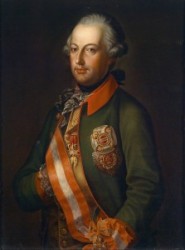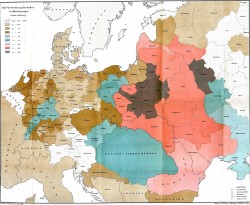 A friend of mine sent me this article by Bennett Muraskin at Slate about the fascinating origin of many popular Jewish last names. I had no idea how recently the process occurred—starting mostly in 1787, when Holy Roman Emperor Joseph II ordered all Jews in the Hapsburg Empire to take last names so that they could be “taxed, drafted, and educated (in that order of importance).” Before that, traditional Jewish last names changed with every generation. You can read the article to learn more details, but here are some highlights:
A friend of mine sent me this article by Bennett Muraskin at Slate about the fascinating origin of many popular Jewish last names. I had no idea how recently the process occurred—starting mostly in 1787, when Holy Roman Emperor Joseph II ordered all Jews in the Hapsburg Empire to take last names so that they could be “taxed, drafted, and educated (in that order of importance).” Before that, traditional Jewish last names changed with every generation. You can read the article to learn more details, but here are some highlights:
Many names took on “son of” or “daughter of” endings—“sohn” in Yiddish or German, “wich” or “witz” in Polish or Russian. Hence names like Mendelsohn or Manishewitz.
Some names came from places: Krakauer from Krakow, Poland, Mintz from Mainz, Germany, Rappoport from Porto, Italy, Wiener from Vienna.
Some names came from occupations: a butcher was Fleishman, a spice merchant was Salzman, a goldsmith was Goldstein, a water carrier was Wasserman. I love Tabachnik–snuff seller.
Some names were combinations of roots Fein (fine), Blumen (flower) Rosen (rose) combined with berg (mountain), thal (valley), bloom (flower).

Here’s an 1881 map of the distribution of Jews in Eastern Europe–sorry it’s so small. You can also see my blog about the expression “beyond the pale” here.